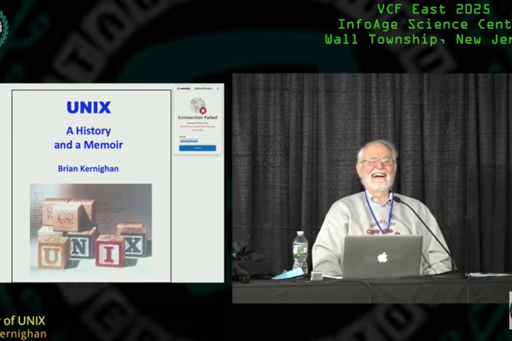The fearful side of Chesterton’s Fence.
- 8 Posts
- 47 Comments
I don’t love Logitech, but their G600 works well on Linux and has plenty of buttons. It is on the large side, so maybe not the best if you play more shooters than MMOs.

 5·7 days ago
5·7 days agoI like having someplace nice to go when the previous place grows into a noisy echo chamber.
KDE System Monitor can display and graph whatever data your system’s sensors are producing. I made a couple of custom pages with the things that interest me, like temperatures, CPU core speeds, and fans. It does the job pretty well.

 8·11 days ago
8·11 days agoYou can replay any game, of course, but Clair Obscur’s gameplay is mostly on rails with basic JRPG combat repeated over and over again, so I wouldn’t bother. (Honestly, I found the gameplay boring within a dozen hours or so.) Its music is where it really shines. You could buy the soundtrack alone for a fraction of the price.
BG3’s atmosphere is good. The soundtrack is IMHO less inspired than Larian’s previous soundtrack and not really outstanding like the one in Clair Obsucr, but still decent. And as a game, BG3 has a lot more to offer.

 10·11 days ago
10·11 days agoFor interesting game mechanics and replay value: Baldur’s Gate 3.
For beautiful music and nice scenery: Expedition 33.
If I had to choose, it would be BG3.

 14·11 days ago
14·11 days agoA feature without quality documentation is a feature I cannot rely upon. (Or if I wrote it, one that I cannot expect other people to use.)
When faced with such things, I avoid them, and implement richer features myself using basic ones that are well documented.
I picked it up because I liked the syntax and systems programming capabilities. At least on the surface, it’s fast and expressive.
My main criticisms of the language: the meta-programming features can quickly draw the programmer into unpleasant complexity, and the official docs don’t make it easy to discover small bits of important info when you don’t already know where to look. (And the latter problem makes the former worse). It’s a work in progress, of course, and I believe these problems could be fixed.
I got productive with Nim in a month or two. I dropped it when I found that the BDFL is both routinely insulting to people, and hasty in closing legitimate bug reports. These are both big red flags in my book. I don’t want to have to interact with him again, and I don’t want any of my work to depend on him.
PlayStation DualShock 4 and DualSense controllers are great on Linux, and often reasonably priced during holiday sales.

 2·24 days ago
2·24 days agoCan you link these studies, please?

 581·24 days ago
581·24 days agoObligatory Jason Heeris comic


 2·25 days ago
2·25 days agoI don’t validate emails, I test them.
Hooray! You get a gold star.
OK, maybe I do some light validation first,
I hope your “validation” does nothing more than show a warning that the user is allowed to ignore.
I have seen too many systems built by people who think they know what’s valid or not before and after the
sign*, and they are almost always dead wrong. In the worst cases, such systems accept an unusual-looking address and claim to send the expected verification message, but never actually send it. Of course, these systems won’t work for some people, and since none of their online docs or support staff know why, those people will be locked out of using the system and funneled into bottomless pit of misery if they try. Please don’t build broken garbage like this.*Fun fact: Not so terribly long ago, even the
sign didn’t have to be present. Some email addresses were bang paths. I’m not sure if any of these are still in use, but it wouldn’t shock me to learn that they are.

 71·25 days ago
71·25 days agoUse a library
Please, no. If someone wrote email address “validation” complex enough to warrant a library, then their code is almost certainly wrong.
or check for only the @ and then send an email confirmation.
Yes. Do that.
If your boss demands a more detailed check at input time, then make it display warnings, not errors, and continue to the confirmation sending step if the user chooses to ignore the warning.

 242·28 days ago
242·28 days agoDebian in general is not meant to run on the latest hardware.
When I see someone on social media claiming Debian is unsuitable for gaming, I know immediately that they don’t know what they’re talking about. I’ve been gaming on different distros since before Steam ran on Linux at all, and on Debian Stable for nearly a decade. This includes my current system, which was built a few months after the GPU was released.
In general, Debian can run just fine on new (Linux-compatible) hardware. If you’re talking about Debian Stable and hardware that was released less than a year ago, then you might have to pull in a newer kernel and/or firmware, but it’s not hard. In most cases, it’s as simple as enabling Debian’s Backports repository and installing the couple of new packages that you need. (You might not even have to do that, since Flatpak and Steam provide updates to much of what games need, but it would be wise to remember Backports anyway just in case you need them some day.)
The main thing to consider is that it’s not completely effortless. It will probably require a little more setup than a game-focused distro would, so if you’re considering Debian for a gaming system, you should know why you want it. For example, maybe you want a very low-maintenance system once it’s up and running. Or maybe Debian’s focus on Free software appeals to you. In such cases, a few extra steps when getting started might be worthwhile. But if you don’t have a specific need that Debian fills, then another distro might be more convenient.
Debian 13 is not going to get the latest versions of Nvidia drivers and there are better distros for us.
I don’t know if that’s true or not. Nvidia has a well-deserved reputation for making their hardware painful on Linux, and although the situation is less bad today than it once was, it’s still not great. If you’re determined to stick with them, then sure, a distro that does the extra work of packaging all of Nvidia’s driver releases might be a better choice for you.
(For what it’s worth, I finally ditched Nvidia in favor of AMD GPUs, and have been very happy with the results.)

 51·29 days ago
51·29 days agoThat change is about
TrueandFalse, nottrueandfalse. If OP was thinking of the former pair, it would seem my “different identifiers” guess was correct.

 4·29 days ago
4·29 days agoPython doesn’t have
trueorfalsekeywords, nor any other primitives by those names.So either you’re thinking of a different language, or different identifiers, or someone assigned equal values to variables with those names and then blogged about it.

 9·29 days ago
9·29 days agoIt’s refreshing to see someone on social media who doesn’t dismiss code as “outdated” just because of its age.

 47·30 days ago
47·30 days agoThank you for including the spoiler. This tech vlogger’s irresponsible headline would normally have earned a downvote from me.
I didn’t think I would have to spell this out, but when I wrote “as much as possible”, I was acknowledging that some libraries are either too complex or too security-sensitive to be reasonably homebrewed by the unqualified. (Perhaps “as much as reasonably possible” would have been better phrasing.) Where the line lies will depend on the person/team, of course, but the vast majority of libraries do not fall into that category. I was generalizing.
And yes, some third-party libs might get so much public scrutiny as to be considered safer than what someone would create in-house, depending on their skills. But safety in numbers sometimes turns out to be a false assumption, and at the end of the day, choosing this approach still pushes external risks (attack surface) onto users. Good luck. It hardly matters to the general point, though, because most libs do not have this level of scrutiny.
Let’s also remember that pinning dependencies is not a silver bullet. If I didn’t trust someone to follow “best practices”, I don’t think I would trust their certification of a third-party library hash any more than I would trust their own code.
With all that said, let me re-state my approach for clarity:
- I minimize dependencies first. Standard libraries are great for this.
- When something more cannot reasonably be avoided, I choose very carefully, prioritizing the safety of my users over my own convenience.
- Sometimes that means changing my original design, or spending my time learning or building things that I hadn’t planned to. I find the results to be worth it.








What about Googling stuff offline?